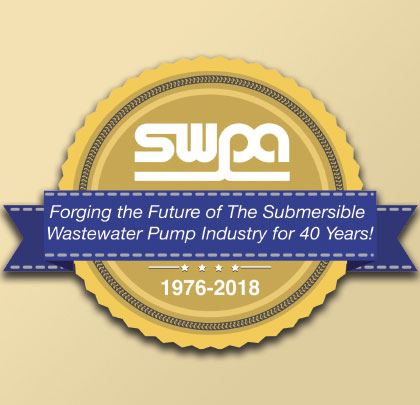Submersible pumps are known for their reliability, but even the sturdiest of equipment wears down or, eventually, needs replacement. When to end a pump’s life cycle rather than extending it is one of the most important questions a pump owner can ask. Below, SWPA Executive Director Adam Stolberg and SWPA’S Vice President Clark Henry from Environment One Corporation tackle this crucial issue.
What should pump owners look for when assessing the need for a replacement?
Pump owners should look at the combination of the cost and the longevity of the pump for each instance. The repair cost might be lower than a new pump, but so too might be the longevity of the repaired pump. Items that can drive up repair costs are excessively corroded castings, damaged electrical components or items that require more hours to replace. There are also practices that can drive up repair costs unnecessarily—especially the mindset: “I might as well replace this while I’m here.”
That mindset can turn an average repair into an expensive repair and perhaps into a pump replacement. Repairs should typically only be performed on components that are damaged. That keeps the labor and financial impact to a minimum.
How can a replacement pump kickstart improved efficiency and performance for an entire system? Is replacing a pump the best time to assess system performance?
The service technician should be capturing data on every service call. That data should provide insight into the system. Reviewing data collected over several sites over time can provide further insight into system performance.
If the replacement pump is able to deliver sufficient pressure and scouring velocities, it can clean lines that may have collected deposits with underperforming pumps. The cleaner lines can improve wastewater transmission efficiency and performance.
To stay on top of a pump’s performance, which inspection schedules work best for different applications?
The best pumps are those that do not require regular maintenance schedules. If the pump contains floats or level sensing probes, they typically will require cleaning to maintain proper performance. The frequency of cleaning is proportional to the FOG (fats, oils, and grease) content in the wastewater. The lower the FOG content for the application (laundromat, conscientious homeowner, etc.) the less frequently they need to be cleaned (annually, or semi-annually). If the application has a heavy FOG content (restaurants, etc.), then very regular maintenance (monthly perhaps) is required.
What are some key efficiency and performance points to consider?
Efficiency and performance depends on the type of pump being used. For centrifugal pumps, understanding the hydraulic dynamics of the system is critical to selecting the correct motor/impeller combination. That will ensure the pumps will perform at the correct point on the pump curve, which will allow them to perform as well as possible for as long as possible.
For semi-positive displacement pumps, the pump selection is a little more straight forward. Because the discharge volume is relatively constant, the same pump can be used across the sewer system. Monitoring the amperage at a location over time can help assist in identifying line blockages or worn pump components.
If pump users decide to repair an aging pump, where can they best find quality parts? Will this require a different approach to maintenance schedules and inspection?
It is always best to use OEM parts for pump repair to ensure your pump performs as the manufacturer intended. The use of non-OEM parts can occasionally save a little amount of cost up front, but will usually lead to more frequent repairs and significantly more cost in the long run. Also, the part quality is typically not as high, which leads to more frequent pump repair as well. This can hurt the reputation of the product and perhaps the particular sewer technology.
If a pump is repaired properly (using manufacturer’s instructions and OEM parts), the repaired pump should be treated the same as a new pump. Attention should be paid to maintaining accurate historical service records. Those records are the key to identifying faulty site conditions that could be the root cause of repeated failures. ◆
____________________________________________
MODERN PUMPING TODAY, February 2018
Did you enjoy this article?
Subscribe to the FREE Digital Edition of Modern Pumping Today Magazine!
![]()


